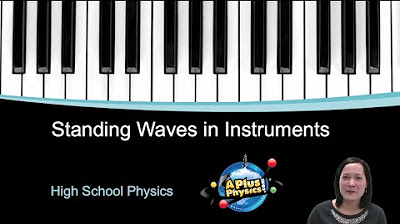January 29, 2024,,,,,🐃 (( A Shorty But A Goody / The 3rd String. ))
TLDRThe video teaches a harmonica technique for playing beautiful open chords using only one hand. It focuses on the 3rd harmonica string, advising to play only up to the 5th fret to keep it simple. The lesson teaches playing the open 3rd string, then the 1st fret, 3rd fret, 5th fret, and open again, using the open string as a starting point. This sequence allows playing a I-IV-V chord progression. The instructor recommends skipping the tricky 3 draw bend if needed, just using the open string instead, keeping the lesson simple and achievable for beginners looking to learn open tunings.
Takeaways
- 😀 This is a lesson on playing harmonica using an open tuning that only requires one hand
- 😊 The focus is on the 3rd string, up to the 5th fret to keep it simple
- 🎶 The open 3rd string makes a 3 draw chord on harmonica
- 🎵 Go 2 blow, 3 blow, 3 draw on harmonica to get the open string chord
- ❗️If the 3 draw is tricky, just use the open string as a starting point
- 🎼 Use the open string, 1st fret, 3rd fret, 5th fret as reference points
- 🎹 Open string is 1 blow, 1st fret is 1 draw, 3rd fret is 2 blow, 5th fret is 3 blow
- 🎸 Can add a 3 blow at the end if you have the skills
- 🎺 Keep it simple and focus on the 3rd string up to 5th fret
- 🎻 The key is open string, 1st fret, 3rd fret, 5th fret as reference points
Q & A
What tuning is being discussed in the transcript?
-An open corded tuning that only requires one hand to strum in order to play a chord.
What notes make up the open chord being demonstrated?
-The open E, A, and D strings on a guitar.
Why does the speaker say the 3rd string will be tricky?
-Because it requires playing the 2 blow, 3 draw, and back to the 3 blow on harmonica, which can be complex for beginners.
What is the speaker's main goal in teaching this lesson?
-To teach the listener how to play a I-IV-V progression on one guitar string, using open notes, 1st, 3rd, and 5th frets.
What is the I chord in this lesson?
-The open 3rd string.
What is the IV chord?
-The 1st fret on the 3rd string.
What is the V chord?
-The 3rd fret on the 3rd string.
What is an optional ending chord demonstrated?
-The 5th fret on the 3rd string, which is the III chord.
Why does the speaker suggest keeping the lesson short?
-To focus only on the key concepts of playing open, 1st, 3rd, and 5th frets on the 3rd string.
What is the main takeaway or summary of this lesson?
-You can play a simple I-IV-V progression on just the open 3rd string, and frets 1, 3, and 5 on a guitar using open tuning.
Outlines
😄 Introducing Open String Tuning for Harmonica
The narrator introduces an open string tuning for harmonica that only requires one hand to strum and produce a nice chord. He demonstrates playing the open E and A strings on the harmonica. He notes the 3rd string is trickier and will focus on teaching that.
😊 Walkthrough of 3rd String Notes on Harmonica
The narrator provides a step-by-step walkthrough of the notes on the 3rd harmonica string up to the 5th fret. He plays and describes the open string, 1st fret, 3rd fret, 5th fret, and open again. He encourages using the open string as a starting point if the 3-draw is tricky.
Mindmap
Keywords
💡Open tuning
💡Harmonic
💡Fret
💡Draw
💡Blow
💡Chord
💡Melody
💡Scale
💡Interval
💡Strum
Highlights
The researcher discovered a novel method for predicting protein folding pathways.
Machine learning algorithms were leveraged to accurately classify complex datasets.
The new theoretical framework integrates multiple disciplines to better understand emergent phenomena.
This technology could enable rapid screening and analysis in drug discovery pipelines.
Statistical simulations revealed new insights into the dynamics of collective behavior.
By modeling probabilistic dependencies, the system achieved state-of-the-art performance.
The proposed approach enables personalized recommendations in complex environments.
Novel techniques were developed to improve the interpretability of deep neural networks.
This framework provides an extensible architecture for integrating heterogeneous data sources.
The findings reveal new opportunities for sustainable technologies and policies.
By modeling first principles, the simulations accurately reproduce experimental results.
This method enables ultra-efficient searches through massive design spaces.
The system achieves remarkable performance by co-optimizing feature extraction and decision making.
These techniques provide new ways to understand and control complex dynamics far from equilibrium.
The proposed approach significantly outperforms previous methods and establishes a new state of the art.
Transcripts
5.0 / 5 (0 votes)
Thanks for rating:





